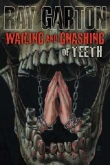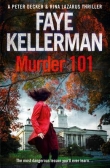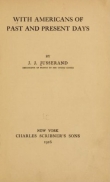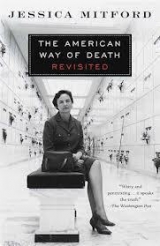
Текст книги "The American Way of Death Revisited"
Автор книги: Jessica Mitford
сообщить о нарушении
Текущая страница: 2 (всего у книги 23 страниц)
1. NOT SELLING
When funeral directors have taxed me—which they have, and not infrequently—with being beastly about them in my book, I can affirm in good conscience that there is hardly an unkind word about them. In fact, the book is almost entirely given over to expounding theirpoint of view. It is chock a block with their Wise Sayings, observations, exhortations, and philosophical reflections culled from funeral trade magazines and interviews with individual funeral directors and official spokesmen.
I did mention that “like every other successful salesman, the funeral salesman must first and foremost believe in himself and his product”, and that “they long to be worthy of high regard, to be liked and understood, a most human longing…. Merchants of a rather grubby order, preying on the grief, remorse, and guilt of survivors, or trained professional men with high standards of ethical conduct? The funeral men really would vastly prefer to fit the latter category”.
To what extent, if any, has their outlook changed over the decades? I had a rare opportunity to observe a representative cross section of the industry in action when to my astonished delight I was invited by Ron Hast, editor of Mortuary Management, to be a featured speaker at a two-day Funeral Service Seminar to take place in October 1995 in Tiburon, California. “That’s like Ralph Nader being invited to address General Motors!” a friend said. For me, the anticipation was akin to that felt by a five-year-old promised a trip to Disneyland, or a teenager offered a bit part in a Hollywood movie.
The reality did not disappoint. Tiburon is in Marin County, which, aside from being one of the richest communities in the country, has a cremation rate of about three times that of the national average. And thereby hangs a tale; for while the seminar topics could have fit handily into any trade-meeting agenda—“Maintaining an Effective Workforce,” “Responding to Community Trends,” “Better Public Relations,” etc.—the subtext of many a speech was how to extract maximum profit from cremation.
We gathered in the Tiburon Lodge meeting hall overlooking a huge swimming pool, a congenial WASPish crowd consisting of forty-four funeral directors from around the country, five presidents of casket companies, a few insurance men, the president of Dinair Airbrush Systems, and various spouses.
Welcoming the group, our host—Ron Hast—glumly mentioned that there had been plenty of protest about my presence at the seminar, not the least of which was a state funeral directors’ association executive’s dire threat to have his members cancel their subscriptions to Mortuary Management.
The audience was soon put at ease by the first speaker, perhaps appropriately from the world of big business: John Baker, spry young former manager of a United Airlines subsidiary with a staff of one thousand, responsible for all employee programs. His subject: “How to Maintain an Effective Workforce,” which he attacked con brio, with much folksy banter and down-home humor. His first question to the audience established the tone: “Who’s minding the store when you’re away?” Someone answered, “My wife.” “Are you sure you can trust her?” Gales of laughter. And: “Be sure to chitchat with your customer.” “But ourcustomers don’t talk!” quipped a casket manufacturer to much hilarity.
The rest of his speech was unexceptional, about a Motivation Study he had conducted to find out what employees value most about their jobs. He assured us that job security, wages, and fringe benefits came far down on the list. First and foremost were Appreciation, Inclusion, Being Part of a Team. “People want to be touched, loved, hugged,” said Mr. Baker. “Lots of touchy-feely! You can buy toy dinosaurs, three for 99 cents—give one to a worthy employee! Put his name in the firm newsletter! Give them balloons—people are mad for it! Invite them to a staff meeting….”
Our next speaker, Tom Fisher, was a man of many parts: regular feature writer for Mortuary Management, owner-director of a North Dakota funeral home, and, as we learned from his opening remarks, a longtime, much admired radio and TV personality in his home state. “I’m known as Dakota Tom,” he told us.
Speaking in the sonorous tones of his calling, he evinced a poignant nostalgia for past glories: “My vocation in funeral services began at a time when the Golden Age of this profession was coming to an end,” he said. “Funeral practitioners who brought sophistication, expansion and acceptance of mortuary services, goods, and equipment to the national marketplace were no more. With their passing, the onset of a professional menopause took place. Isolationism, self-protective insulation from outside forces—these were the attitudes encouraged by industry leadership.”
As an Outside Force, I shifted uncomfortably in my chair at the thought of having caused a professional menopause. But Dakota Tom now launched into his major theme: the lessons he had learned from his radio and TV career. “Basically, this gave me a unique opportunity. The rewards were immeasurable in terms of experience because radio/television accorded me the chance to appreciate the full extent of the power of media image-making. Here is the point I make to you. We, as funeral directors and suppliers, have all kinds of problems on our respective plates these days, but I am here to tell you the greatest of these is based in our lack of identityand image. The public we serve—those consumers we market—aren’t buying into our programming. When we witness a high-profile funeral on television, it warms our hearts. Those occasions are not frequent enough in their occurrence to build consumer image.”
The solution, he believes, is for funeral directors and suppliers to “scrap the present inefficient marketing methods,” pool their resources, and produce fifteen– to thirty-second commercials which “could be delivered by a respected, recognized spokesperson such as a Lloyd Bridges type.” The commercials would “affirm the personality of the industry. They should speak of memorialization, the reason for American funeral service. We could finally become the professionalswe want to be and should be.” Ideal network programs for these commercials would be “Today,” “Good Morning America,” and “Regis and Kathie Lee”: “We should target the 18-to-25-year-olds. Remember, they are the ones who will be making arrangements for their parents. This is a passionate cause for me….”
His peroration: “Funeral service may be listing a bit under the strain of too much undue criticism. But I don’t think we have anyone to blame for that but ourselves. We don’t have to apologize to consumers, to critics or to anyone else….
“When The American Way of Deathbecame a best-seller, funeral service went on a diet from which it never recovered. She was trying to tell us we should do something positive about ourselves. We have nothing to apologize for.”
Next up, the wondrously named Enoch Glascock offered what he described as “an odyssey.” Graduating from mortuary school at the age of twenty-three, his first job was in Greenwood Park, San Diego. “It’s the Forest Lawn of San Diego,” he told us, with three crematoria on the premises. But its selling methods were hopelessly wrong. People would ask for cremation—and there was stiff competition among the staff as to how quickly they could get rid of a cremation family. Some employees bragged that they could do it in twelve minutes! “That wasn’t right,” said Mr. Glascock. “I started talking with the cremation families, explaining their many options. When they realized the possibilities, some wanted the deceased present for the service. Some found it of value to purchase a cremation casket.
“As we went forward, management asked me to meet with all the cremation families. We only had two urns, tucked away on a shelf. I built an urn display and got a rental casket. We had a beautiful statue of Christ near the display, and niches by a babbling brook—those sold like hotcakes! We taught the rest of the staff these techniques. Families are served when there are options. But it’s tragically wrong to sellanything,” Mr. Glascock emphasized. “We go for informed buyingchoices.”
Mr. Glascock’s next job was with Pierce Brothers in Los Angeles. By then he had become an expert in the cremation business, and his new employer sought his advice on developing a cremation market. “Pierce did very few cremations, although they had the first crematory in Los Angeles. They just weren’t doing it right.” His first step was to conduct a community survey in which respondents were asked three questions: (1) Do you know the name Pierce? Many answered “Yes,” as Pierce had high name recognition in the area. (2) What do you know about cremation—can you have a traditional funeral with cremation? Most people answered “No” to that. (3) What does one do with the ashes? Almost everyone thought that ashes should be scattered.
The last two answers showed where the trouble lay—and pointed to the solution. “I’d spend at least an hour with the cremation family, and I’d come out with an urn, a memorial plaque, flowers.”
Over the years, Mr. Glascock continued to perfect his methods. “We came up with ‘$495 Forever Cremation,’ although this $495 didn’t last forever,” he told us. (Too true. Checking later with Pierce Brothers, I learned that the rock-bottom price in 1995 was $728.) He listed Pierce Brothers under “Cremation” in the Yellow Pages and in the obit pages of the newspapers. He put the emphasis on urns; at that time, the urns were too small, so he arranged for bigger ones.
Further outlining his strategy, he explained, “I welcome the family as I would guests to my own home. I offer the rest room, soda, hospitality. Today, I’d come out with embalming, dressing, visitation. At the end of the arrangements conference, we hold hands, say a prayer, have coffee. I’m a tour guide! We are starting to see more memorialization with cremation. We must allbe tour guides.”
He gives the family the vital statistics form and tells them he will obtain the death certificate. “I say that we are required to show them a price list. So I give them the price list and tell them I’m leaving them to read it; go out of the room for about five minutes, or as long as needed to smoke a cigarette. I ask if they have any questions. We don’t accept cash—we take checks or credit cards. We don’t do accounts receivable.” And when it’s all over, “we send a card and a little tree.”
He left us with a final anecdote: “A family came from Pacific Palisades. Later, we heard from the daughter, who told me, ‘You took care of our mother. We had discussed your firm among others. I want to share a thought: we almost didn’t use you, your prices were so low. But then we talked with you and your staff multiple times and concluded you are ‘Our Sort of People.’ ”
As introduced in the program notes, Ron Hast “created the Casket Airtray, and presented it to funeral service in May of 1960—a design that continues unchanged.” (There is a color photo of “The Air Casketray Combination” and the “Original Casket Airtray” on the back of Mortuary Managementunder the headline FRATERNAL TWINS. They are cardboard shipping boxes, each in a wooden tray fitted for the purpose.) Publisher of Mortuary Management, Funeral Monitor, and Mortuary Science Monitor, he is also part owner of Abbot & Hast funeral homes. His topic for the seminar: “Easy, Low-Cost Methods of Public Relations.”
For starters, how to achieve name recognition? One funeral home gives turkeys at Thanksgiving and Christmas to deserving families—that is, to doctors, hospital executives, and others in a position to steer cases their way. (I remember in the dim past being told by a physician friend of receiving such gifts; his only complaint was that the turkey was delivered in a hearse, which he felt caused his patients some uneasiness.)
Ron Hast suggested that there are “more subtle ways of building real strength in your community. The important factor is to give something which allows everyone to participate.
“For example, apples cost 39 cents a pound with a discount by the case. You could buy ten cases at Lucky’s and make up packages of these with enough apples for everybody to get one. You could give a package to the employees of the local police station with a card saying, ‘We appreciate your fine service, with thanks from XYZ Chapel.’ Then—the officer on the next death call will remember XYZ! It’s cheap and easy. Take some to the ambulance service, the nurses’ lounge, the city health department—with a card, ‘Thanks for your good service.’ It’s cheap, it goes right to the heart of people in a position to remember your name. This concept works.”
Then there is that all-important matter of gaining patronage via the clergy. For this, Mr. Hast hit on the simple and highly effective scheme of having a photo taken of each local church. He showed samples of these, which cost 80 cents apiece. “We give hundreds of these to the minister, who can sell them to the parishioners for $10 apiece, thus raising $1,000 for the church fund,” he explained.
There was more to come. The Hast mortuary hired students for an hour or so after school to do odd jobs around the premises. Mr. Hast estimates that each student brings in an average of two cases a year.
Lastly—“ System. Remember the word System.” Too many people, he explained, find it difficult to write letters; they keep putting it off, the moment passes, the letter never gets written. To overcome this obstacle, one can get five hundred cards and envelopes inscribed with the name of the sender for $100. He flourished some sample cards. “Send one to the lady at Kaiser who referred a death, and simply write on it, ‘The family appreciated your kindness to them.’ ”
The brothers Kevin and Mark Waterston titled their talk “Niche Marketing,” a double entendre for those attuned to mortuary-speak; a niche is a repository for cremation ashes but also a specific area of commerce, geddit? The Waterston Funeral Home in Minneapolis was started by their father, a “traditional” funeral director, Ron Hast told us in his introduction; but Kevin and Mark are very nontraditional. “They operate out of one building that will serve more than 2,000 a year, over five percent of all the deaths in Minnesota. They are true marketers,” he said. “They have a pre-need backlog of more than 20,000. And in the last several years they’ve served more than 1,000 new families each year.”
Like Tom Fisher, the brothers see “ identityas the major problem in funeral service.” They learned much from the books Marketing Warfareand Bottom-up Marketingby Jack Trout and Al Ries, which led them to establish a cremation marketing “niche” in Minnesota. “We don’t treat cremation as a stepchild, we treat all families the same,” said Mark Waterston. “We put the serviceinto cremation. Other funeral homes don’t do this. It’s strictly a volume-type operation.” They are also devoted believers in the power of advertising. “We spend $200,000 on advertising. If you want to get into my niche, can you top $75,000 in mailing brochures?”
Aside from the set speeches, there were a couple of early morning treats before the regular meeting got under way.
First of these was a “60 Minutes” documentary dated December 20, 1980, on the subject of the Neptune Society. The video shows Colonel Denning, known as Colonel Cinders (now on his ninth wife, we are told), proclaiming on camera that in eight years he has saved the public $40 million by providing cremations for $400. Much scornful comment from the assemblage, as the rock-bottom minimum offered by Neptune has risen in fifteen years to over $1,000.
Of greater interest was the live demonstration by Dina Ousley, luscious blond president of Dinair Airbrush Systems, of her maquillage as applied to corpses. Dinair offers a range of products to actors on stage or screen, plus a “Fantasy Kit” and “Theme Park & Large Event Systems” with spray makeup in turquoise, black, and white plus glitter. Their price list offers a large variety of stencils, including stars, whales, skeletons, skulls and crossbones….
An appreciative audience clustered round as Ms. Ousley deftly sprayed the face of Max Carroll, owner of a Stockton funeral parlor standing in (or rather lying in) for the cadaver. Later, she told me something of her recent successes in progressing from show biz to mortuary work. “I’ve had a wonderful response on the Internet,” she said. “I’ve sold to mortuaries from Ireland to Argentina, and was at the National Funeral Directors Association annual meeting in Florida this year. Rose Hills in Whittier, California, bought three systems. They’re big business—buried a hundred in one day!”
The “Glamour Kit” consists of a compressor, airbrush hose, cleaner, holder, and makeup in a tote case. “It’s the ultimate camouflage, a technique comparable to pointillism in art,” she said. An important feature is its use after the embalmer has completed restorative work on an accident case, in which replacements are used to repair the injured face. “The airbrush can create little frown lines, wrinkles, crow’s-feet, to give a more natural look.”
Once the mortician has acquired the system, which sells for $850, the cost per customer is minimal; the makeup bottles cost $15.75, each containing up to forty applications. “We have a portable system in a little carrying case that can be taken to a church or other site of the funeral.”
Ms. Ousley thinks there would be much less demand for direct cremation if “people didn’t look so dead—if they looked more alive. People choose cremation with no viewing because the body didn’t look good before my method was in use.” She told me that a recent survey showed that 75 percent of mortuary customers are unhappy with the appearance of the deceased. “I want to help them grieve properly. I myself want to look good leaving here! I just think it helps.”
As for my part, I was the last speaker, billed in the program as having had “a profound impact on the changes experienced in postdeath-care services.” Ron Hast told the audience that “she will share her insights about funeral service,” so I shared away, much to the displeasure of some of my listeners.
First, I gave them a rundown on the origins of The American Way of Death—how I came to write the book, as described in the introduction to the present revised volume. Next, I quoted from some of the reviews that appeared when the book was first published: the favorable ones from a dozen mainstream newspapers and magazines, followed by the unforgettable fulminations of the funeral trade press inveighing against “the notorious Jessica Mitford,” “the Mitford blast,” “the Mitford missile.” But the main point, and the reason I had been invited to speak, was a preview of the forthcoming revised American Way of Death, based on recent developments in the death industries such as huge price increases, ingenious methods of extracting the maximum from cremation customers, and monopolization of the industry.
After my talk, the first question was, “How much money did you make from The American Way of Death?” “Absolute tons,” I answered. “So much I can’t even count it—it made my fortune.” Audible groans from the audience.
There were a few more questions, some about the Federal Trade Commission, some about the anticipated response to the Service Corporation International (SCI) invasion of Britain. In answer to the latter, I tried to explain that I thought it unlikely that the Brits would ever fall for the American way—the idea of people gathering to gaze at a corpse in a coffin wouldn’t catch on. Nor would they embrace the notion of undertakers as grief therapists. The session ended with a short, sharp interchange in which a funeral director refused to tell the assemblage what his exact prices were because, as he explained, he did not wish to divulge this information to his competitors.
Later that day, some of us gathered round the lodge swimming pool for a chat with Tom Fisher. Karen Leonard, my researcher, asked him to elaborate on the point he had made at the meeting about outside forces. “Since you were in the business in 1963, can you talk a bit about the reaction to The American Way of Death?” she asked.
In his Dakota Tom mode, Mr. Fisher replied: “I said in my speech that I applaud Jessica Mitford. She did us the greatest favor this industry ever experienced. We were flaccid and a little fat around our waist, and I said we were a little smug up here. I said that cleansed us of that. It put us on a diet. The problem was that the funeral directors overreacted so badly, the diet became a starvation diet, and they never found the strength, you know, for almost twenty-five years, to find their way out—how to do something for themselves—so I always applaud her.”
Enclosed in the seminar program was a sheet in which participants were asked to rate the speakers, with a space for comments on each. Avid to hear how I had scored, a few days later I rang up Ron Hast. Enoch Glascock came in first of the seven speakers, he said, but I was No. 2. The comments on my talk ranged from “very complimentary” to “very adverse.” He read out a few examples. Under complimentary: “A true brush with history, a wonderful perspective.” “Delightful, but she appeared to irritate many in the audience.” Adverse: “She’s still a cancer—how easily we forget all the damage she did, making a mockery of funeral service.” “Most unnecessary to provide a platform for a critic of our profession.” There had also been some phone calls, Mr. Hast told me: “One was somebody from Michigan State Funeral Directors Association, a pompous numskull, I couldn’t repeat his language!”
In a subsequent Mortuary Managementeditorial entitled “Tuning In or Out,” Ron Hast made some of the same points as Tom Fisher had in his poolside chat. He stoutly defended his decision to invite me; as to those who threatened to stop their subscriptions to Mortuary Management, he would “encourage them to call us at our expense to cancel their subscriptions—then go and put their heads back in the sand.”
“We may or may not agree with the beliefs or expressions of Jessica Mitford,” he wrote. “… Statistics now demonstrate throughout North America that simplicity or funeral avoidance isnow the tradition in many regions. The American funeral-buying public has changed, and continues to change…. Ms. Mitford asked questions and listened to the answers more than thirty years ago, and produced something the public wanted to hear. Is it not time for us to do the same?…
“Can we expect to receive bouquets and laudatory cheers from Jessica Mitford in her new book? I think not. In fact, it is sensible to anticipate volatile criticism of current practices and agendas targeting death-care providers.”
Reflecting on what I had gleaned from the Tiburon experience, I have concluded that not much has changed over the years in the way undertakers see their world. They would still “vastly prefer” to be looked on as “trained professional men with high standards of ethical conduct,” but the exigencies of their trade still force them into the role of “merchants of a rather grubby order.” Enoch Glascock’s exposition of how to manipulate a family bent on a simple cremation into buying a full-fledged funeral was for me a high point of the seminar—I agreed with the No. 1 rating accorded him by his colleagues. But how does that fit in with Ron Hast’s perception that “simplicity or funeral avoidance isnow the tradition in many regions”? Or with the general tone of his and Tom Fisher’s remarks about the impact of The American Way of Death?
Possibly it was the split personality of the calling, arising out of its inherent contradictions, that led to my invitation in the first place.

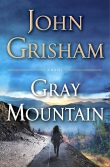


![Книга Make Winning a Habit [с таблицами] автора Rick Page](http://itexts.net/files/books/110/no-cover.jpg)
